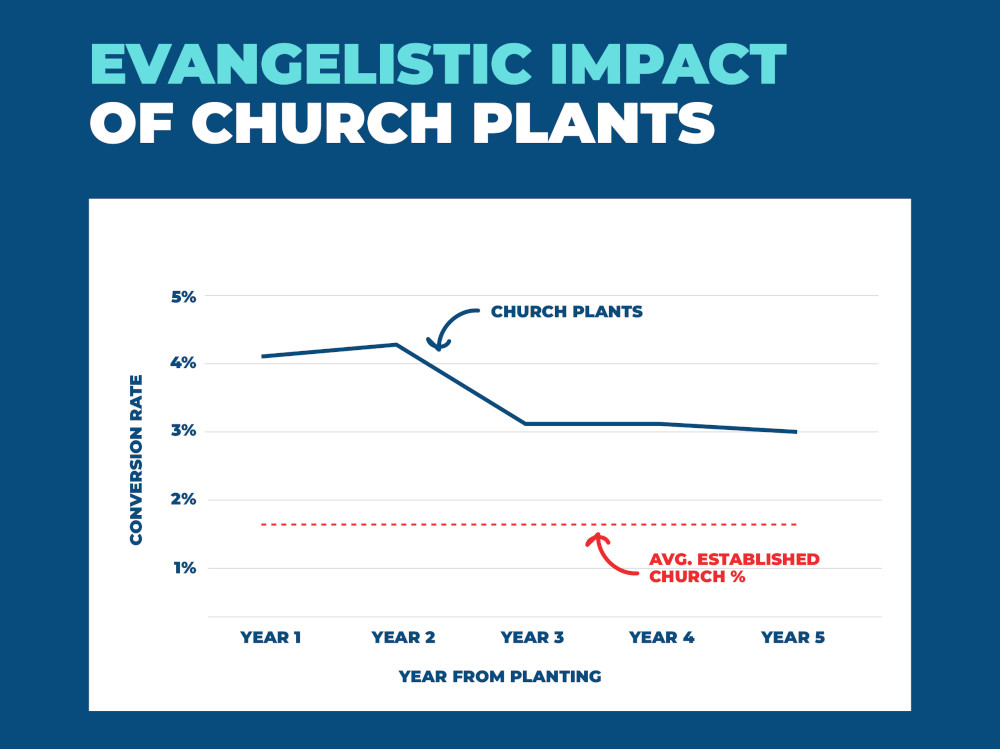Over 80 per cent of churches planted by Reach Australia and its predecessor Geneva Push become healthy, financially self-sustaining churches. That’s a conservative estimate by Reach Australia’s Executive Director Scott Sanders.
He does not want to be overconfident, but of the 124 churches launched by Geneva Push or the re-named planting operation Reaching Australia for Christ over the past 13 years, only eight have closed. Another 20 have been launched in the last couple of years – Sanders is not counting chickens before they hatched. However, he has every reason to be confident they, too, will become financially secure. (The actual stat for financial stability is 92 per cent because some of the youngest churches are doing well so far, but Sanders wants to leave the youngest ones out.)
He says Reach Australia have become better at its job over time. “Most of those young churches have moved towards health,” he tells The Other Cheek. “I think there’s only one or two that haven’t in recent years. As a network we’ve become better at supporting churches. We’re always learning new things. in the last few years, we’ve seen most of our churches move towards health and grow quite quickly.“
“Church planting in Australia is working,” the Reach Australia conference was told last week. “It is mobilising groups of people. We’re talking about, on average, 1 convert per 12 members of church. From the data we’ve collected in the network, across more than 120 churches, we can see God has saved over 3,00 new people into his kingdom.”
This graph shows conversion growth is associated with new plants.

(Credit: Reach Australia)
But something about church plants does concern Sanders, even while they remain extremely effective at reaching people and bringing them into Christ’s kingdom.
“We would always like them to be more evangelistically effective, and so we’ve been asking questions about how do we continue to see multiplication in church plants, he tells The Other Cheek.” And then a reveal: “Church plants slow down after the five, six, seven-year mark.
“That’s partly because there’s a tiredness, or there’s a leadership change. There’s often a second worker [to hire]. Like all churches, they tend towards becoming insider-focused.
“And so you’ve gotta keep challenging the status quo and creating the urgency for mission, and continue to reach out. This is something that Derek Hanna, who heads up the planting arm of Reach Australia, has been working on, particularly with our church planters.”
Asked why he thinks Reach Australia has become better at church plants, he describes a process of constant improvement in the assessment of possible planters, surveying the network to find out what’s working, improving the coaching of planters and particularly the training of our volunteer coaches. One major shift is our desire to encourage stronger launches. Church plants launching with teams of 55 or more. This is is a bigger number of people than we’ve seen historically on average in Australia.
As we discuss this, Sanders reveals that he believes the sort of church plants we’re supporting have shifted.
“The negative of becoming better at planting is seeing fewer pioneer church plants. We’re seeing less risk-taking, and we’re seeing more effectiveness. More of our plants are mother/daughter or campus/site plants. Which points to better health in established churches.”
He points me to a quote from Derek Hanna encouraging them all to have clarity and courage. “Here are the two great challenges when it comes to church planting across Australia:
“1. CLARITY. A lack of clarity around the state of the lost in Australia, a lack of clarity around the impact of planting, the lack of clarity around what a church planter looks like, the lack of clarity around how and what it looks like to raise up and send a church plant. These are solvable problems. If we’re willing.
“2. A LACK OF COURAGE. For those who should be considering planting, and those who should be considering sending a church plant. A nervousness about what it might cost to pursue planting. Sometimes our fear of risk is greater than our heart for the lost.Risk and pain? Yes. But temporal.Reward? Yes. And eternal.” – Derek Hanna (Director of Church Planting) at Reach Australia’s National Conference 2023
“As you get older, you take less risk; you don’t jump off the pier at the water,” Sanders muses. “You go down the stairs into the water. We need to keep challenging church leaders and the next generation of leaders to be taking risks to reach the lost.”
Sanders gives a sample of a “Pioneer” plant in the outer suburb of Hobart, Glenorchy, called City North Church, led by Marty Hughes, who moved from middle-class Gladesville in Sydney to the working-class suburb in Hobart. They launched in 2021 after a long “incubation” period. Sanders remembers first talking with Hughes back in 2017.
As an example of a safer plant – though definitely not without risk – Sanders offers the Colonel Light Gardens church in Adelaide’s Trinity Network, planting a few suburbs south in a TAFE college campus in Tonsley.
It is fascinating that both examples involve breaking through a class structure, both defying the stereotype of middle-class Christians planting in middle-class places.
Covid slowed the church planting program for a couple of years, but Sanders sees it picking up speed again, not just in the reformed evangelical space that Reach Australia occupies but also with Pentecostal groups, the NSW Baptists and the Uniting Church’s Propel group. So the buzz is getting louder again.
One reason Reach Australia is confident of increased planting is a “Start the Planting incubator” with college students. Starting last year with 22 students from Moore College and Sydney Missionary and Bible College, this year’s intake has 42 students from WA, Victoria, QLD and NSW.
“Our sense is that we’re actually going to see greater planting in the next few years.” An example from the conference is a plant in the Centenary Suburbs of Southwest Brisbane. Ben and Faith Ho, who have led St. Lucia Evangelical Church, are taking a group from that primarily Singaporean student-based church, going together with a group from another inner-city FIEC church Christ Community Church in Toowong with an assistant minister. “
Together they will start Centenary Evangelical Church in six weeks.
Sanders says Reach Australia surveyed their church planting network. “We had 40% of network churches surveyed saying they are wanting to start something new in the next five years, and we actually made them put a date on it.”
Reach Australia’s Church Planting Director Derek Hanna told the Reach Australia Conference, “New Churches reach new people. New churches do stupid things now that established churches call cutting edge in 10 years’ time.”
But there were plenty of people from established churches at the Reach Australia conference, including two leaders who turned around after last month’s Gafcon Conference in Rwanda and a mission trip in Tanzania and headed to the conference with their church teams.
Church plants have to have a plan; Sanders points out. That is because they are starting with nothing in place. And also because the Reach assessment process nudges them to have a plan.
Building teams, being intentional as a leader across all of church life, and mission driving your regular planning are Reach Australia’s message to the established church – essentially acting in part as if they were a church plant.
The Other Cheek asked Sanders to try to give dot points:
- Clarify the big outcome. Making mature disciples in increasing numbers.
- Be faithful and wise in the means; word and prayer
- Team pastoring, church leaders need to take responsibility and build responsibility.
- Recognising that church is complex. You’ve got to break it down to understand what’s going on, You could do this a few ways. Analysing how people move into church life – a pathway or reflecting on key outcomes you want for a follower of Jesus.
- Ecosystem thinking: the reality that all of the church disciples someone. In church life we often partition different aspects of the work into separate structures or programs, and fail to see the power of their interconnection.
Image: Reach Australia conference 2033, Credit: Reach Australia FB.
Some extra info from Reach Australia:
• Link to download framework paper (you can read all of the above here) https://reachaustralia.com.au/reach-australia-framework-ebook We want to be generous with the resources the network is creating and sharing.
• Next year’s Reach Australia National Conference, ‘For the Glory of God’ is on 13-16 May 2024 at EV Church, Central Coast NSW. Gary Millar and Ray Galea will be speaking.

